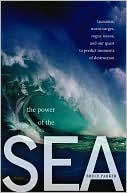The Power of the Sea: Tsunamis, Storm Surges, Rogue Waves, and Our Quest to Predict Disasters
Search in google:
The awesome power of the earth’s oceans has been in the headlines in recent years, from the 2004 Indian Ocean Tsunami (300,000 dead) to the devastation of New Orleans caused by the storm surge from Hurricane Katrina, to the huge rogue waves that have struck oil tankers and cruise ships. Bruce Parker, former Chief Scientist for the National Ocean Service, tells these stories as he explores the history of our struggle to understand the physics of the sea so we can predict when it will unleash its power against us. His wide-sweeping narrative interweaves exciting stories of unpredicted natural disasters with fascinating stories of scientific discovery, including:* Napoleon’s realization about Moses and the Exodus after his own narrow escape from the dangerous tides of the Red Sea;* the critical role that tide predictions and wave forecasts played in the Allied victory on D-Day;* how the deadly storm surge that killed half a million people in Bangladesh in 1970 led to that nation’s fight for independence;* how the largest tsunami in recorded history carried three fishing boats from a bay in Alaska into the Pacific Ocean—and the father and son who survived to tell the tale;* how a ten-year-old English girl saved dozens of people during the 2004 Indian Ocean tsunami, and why elephants were able to save so many lives;* how the sea affects El Niños and climate change, and whether sea level rise due to global warming will put our coasts underwater;* how today’s scientists are working to predict the sea’s next disaster using a vast global array of oceanographic sensors—on buoys, on ships, on islands, along coasts, and on satellites —to provide the huge quantities of real-time data needed by computer prediction models.This richly textured narrative, with its sweeping look at more than 1,000 years of ocean history and science, will captivate readers even beyond those already interested in the ocean, naval history, marine science, or the environment. Publishers Weekly In this educational account, professor (at the Stevens Institute of New Jersey) and scientist Parker examines the violent impact of the seas on human society, and our long struggle to understand them. Parker begins with an exploration of tidal forces and their role in major historical events, from the parting of the Red Sea to D-Day. He moves on to hurricanes, rogue waves, and tsunamis, ending with the catastrophic 2004 Indian Ocean earthquake and following tsunamis that killed more than 225,000 people. As Parker describes these sea-spawned disasters, he also documents the slow growth of scientific knowledge that gives us a chance to predict and prepare for them. Parker is more scholar than storyteller, and at times he loses the drama of his subject. Long discussions of such topics as "Laplace tidal equations" and "geophysical fluid dynamics" give the sense of a first-year lecture on oceanography. Nevertheless, any reader with an interest in the subject will appreciate Parker's expertise. Parker is optimistic about our ability to manage the dangers of the seas, but as the events of 2004 demonstrated, in spite of all we've learned, they still have the power to render us helpless. (Nov.)
List of FiguresIntroduction: When the Sea Turns against UsEscaping the Sea's Fury through Prediction 11 The Earliest Predictions for the SeaThe Tide 72 The Moon, the Sun, and the SeaThe Tide Predictions for D-Day 73 The Sea's Greatest KillerPredicting Storm Surges 534 Defending Our CoastsFlooded Cities 755 Stormy SeasPredicting Sea, Swell, and Surf 976 "Holes" in the Surface of the SeaRogue Waves 1177 The Sea's Response to an Unpredictable EarthTrying to Predict Tsunamis 1338 December 26, 2004(Part 1)Tragic Surprise in the Indian Ocean 1619 December 26, 2004 (Part 2)Learning from a Tragedy 18110 Predicting the Future---and Saving LivesEl Nino, Climate Change, and the Global Ocean Observing System 203Acknowledgements 219About the Author 223Notes 225Index 285








